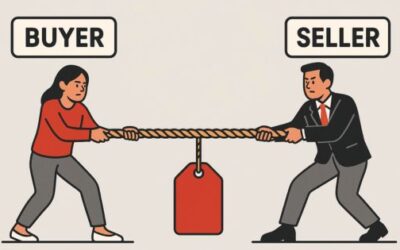Close rates are a pivotal metric when you are assessing the effectiveness of your sales teams and strategies. Understanding your close rate allows sales leadership to quickly diagnose key sales issues.
What is close rate?
Close rate (or win rates), a key performance indicator in sales and marketing, is the percentage of potential customers (leads) who end up making a purchase. It can be a direct measure of the effectiveness of both sales measure and marketing campaigns. It is particularly important in industries focused on direct selling or ecommerce as it can indicate how well a campaign influences a purchase.
Close Rate formula
To calculate the close rate, use the following formula:

The result of the formula represents you or your teams efficiency in turning leads into paying customers.
Calculating close rates; Step-by-step Guide
- Select a time frame: Define the period for calculating your rates (monthly, quarterly, yearly, or all time). Regular calculations show the impact of changes over time.
- Total the Number of Leads: Count all of the potential customers contacted during the selected period. For campaign-specific analysis, only include customers generated from that campaign.
- Count the number of conversions: Tally the leads that converted into customers. A conversion, in this case is calculated by completed sales. Again, if you are searching for the close rates for a specific campaign, count only the customers that were generated through that campaign.
- Apply the formula: Use you totals leads and conversions in the close rate formula to find your rate. This figure is crucial for evaluating sales and marketing effectiveness.
Utilizing close rates in business strategies
Understanding your win rate and the trends and trajectories is essential in identifying areas for improvement.
Adjust sales techniques
If close rates are lower than normal or expected, it might be time to revise the strategies or messaging that’s being used.
Target the right audience
Low win rates could be an indicator that the team is not targeting the right demographic and thus losing sales because the product is not relevant to the targeted audience.
Enhance Training and Resources
Investing in training for the sales team could help improve interactions with leads. It’s also possible that the resources provided to the marketing and sales team need a refresh.
Track Progress over time
Regularly calculating the close rates helps executives monitor the effectiveness of their teams and the strategies being deployed.
Addressing low close rates
Understand the problem
Low close/win rates often stem from sales teams failing to uncover the buyer’s motivation to change, leading to lost deals due to no-decision or the status quo. Studies show that up to 60% of deals are lost this way. The common product-centric selling approach inadvertently focuses the customer on features and price and neglects the buyer’s “why.” Overcoming this involves shifting to a problem-centric discovery approach.
Diagnosing the root cause
The root cause of losing deal to no decision or the status quo often lies in product-centric selling. Focusing on product needs and pain points instead of current business problems can lead to lost deals. Effective sales strategies us customer-centric qualification criteria, focusing on the buyer’s problems and their intrinsic motivations for change. This approach aligns the sale with the buyer’s need for change rather than the product’s features.
How to fix low close rates
To improve win rates and conversions, a sales team must transition from a product-centric to a problem-centric approach. This requires:
Training Your Sales Team
Enhance the team’s business acumen and understanding of the buyer’s environments and problems.
Handling objections
Equip the team to handle objections and minimize the impact of losing to the status quo.
Emphasizing the value of change
Focus on the value and impact of change rather than the product or service and it’s features.
Download the PIC (Problem Identification Chart) to help your team understand your buyer’s business problems, why they exist, and how they impact the business. This is the first step to becoming a problem-centric sales organization.






0 Comments